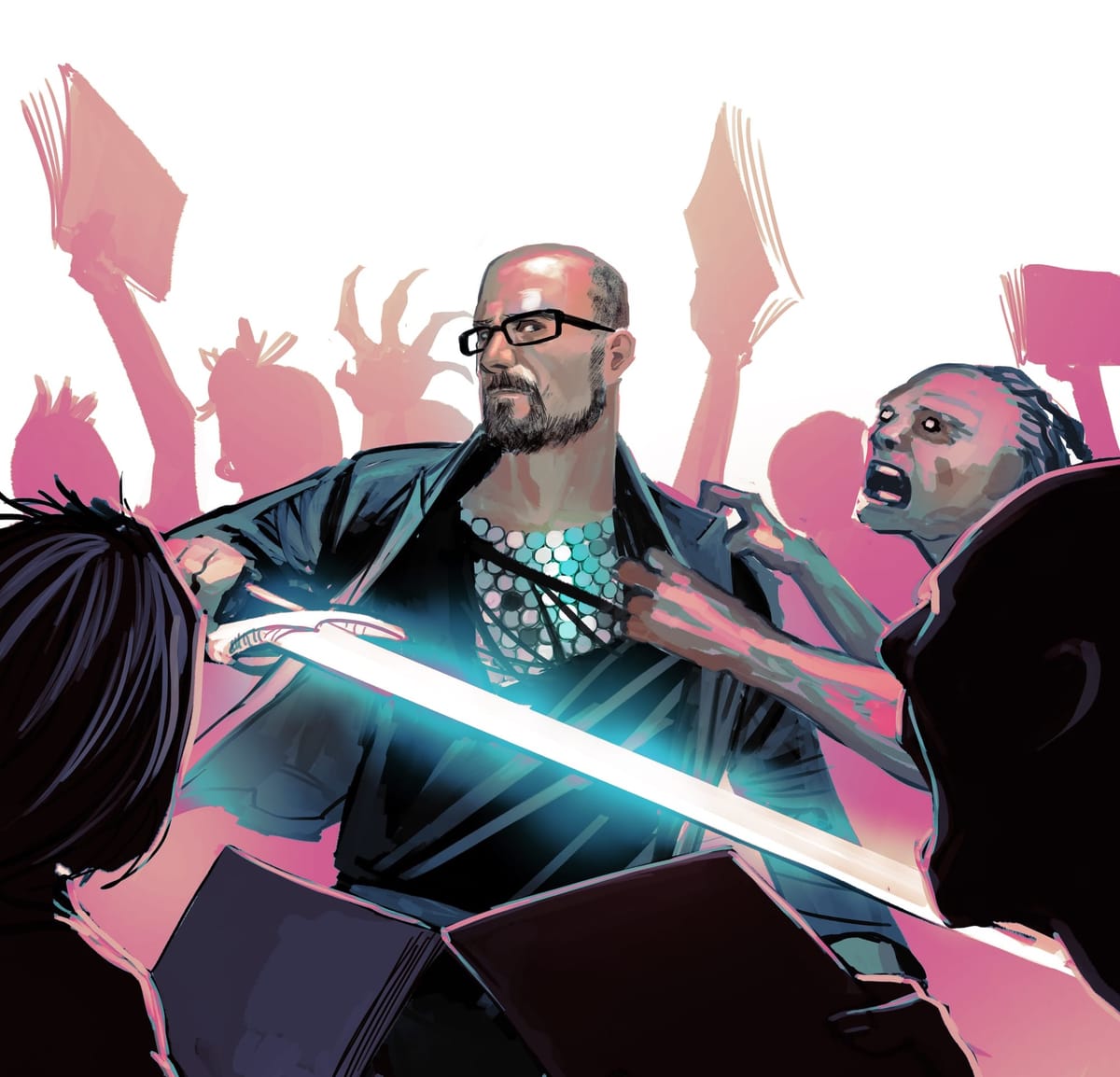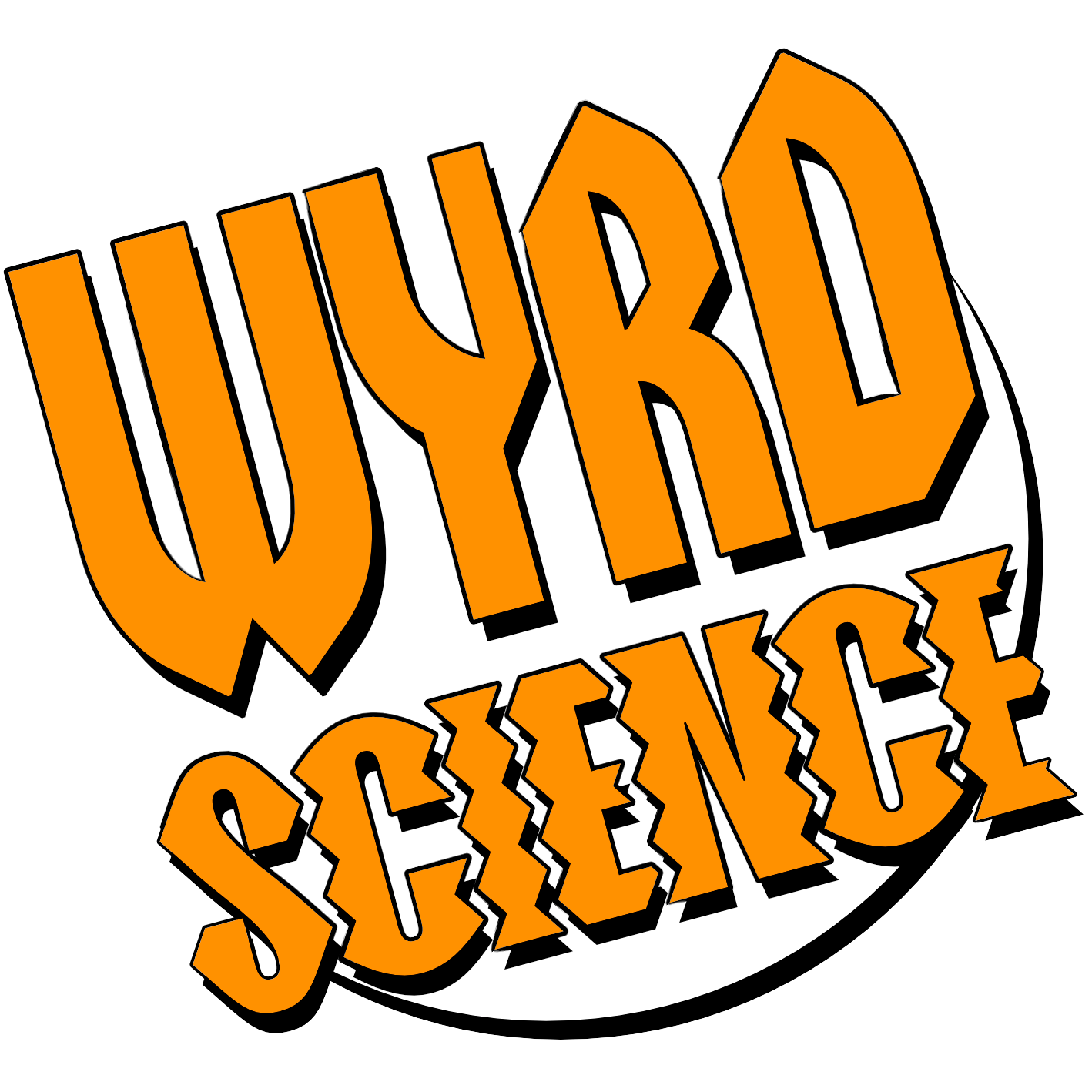
Way back in our first issue we spoke with comic writer, and then nascent RPG designer, Kieron Gillen about his recent comic, DIE, the forthcoming accompanying game and, well, just about everything. It was, as the kids probably said ten years ago, a lot.
The comic told the story of a group of teenagers pulled into a strange new roleplaying game and who emerged years later both bound together a vow of silence and torn apart by what they’d experienced. Decades later, now with all the added joys of midlife, they find themselves back together and back in the world of Die, it was ‘Goth Jumanji’ to use Gillen’s own words.
3 years later and DIE - The Roleplaying Game is now in our hands too and, we are pleased to say, a triumph. Picking up where the comic left off, the RPG is -besides being a great game- part treatise on the transformative power of play, part deconstruction of fantasy and gaming tropes, part therapy session and everything we wanted from Gillen.
Interested to see if we could keep an interview with Kieron under 10,000 words we tracked him down to find out just how life as a games designer was treating him...
Wyrd Science: DIE was always conceived as both a comic series and RPG, how did exploring one idea through two different mediums work out?
Kieron Gillen: For a long time, I wasn't sure which was the dog and which was the tail. Eventually, the dog ate its own tail, and became a dog ouroboros. They became different lenses at looking at the same thing, and each illuminates the other. DIE exists outside of both, for everyone, including me.
That both were being worked on at once had some real interesting effects too - mainly I was thinking about DIE twice as much as I would otherwise. Certain key aspects emerge in one and then jumped to the other. For example, the truth about the Fallen was born from me wanting to avoid player elimination in the game.
WS: And how recognisable is the finished game to what you first envisaged, did working with Rowan Rook & Decard change much?
KG: In terms of the journey? The weird thing is that the core of DIE was just there from the first playtest - make up a group of sad people, do a miniature Nordic LARP, drag them into a fantasy world, externalise their inner demons into outer demons and a final meeting with the Master to decide whether to go home or not.
After that, it's all been about how best to execute and explain the idea. That's what RRD brought - the polish and focus on how to make this as good as possible. They also introduced me to the delete key. Marvelous innovation. I have no idea how I got by without it.
WS: You first had the idea for DIE back in 2016, 5E was only a year or two old at that point, did you imagine that just a few years later people would be filling arenas with people watching them play D&D and how much the RPG scene would change?
KG: I think that was on the horizon then. Actual Play culture was demystifying RPGs to millions. By definition, if one of them gets popular enough, they'll be filling ever bigger spaces. For me, once you've made the leap to "Hey - people actually want to watch people play a game" the jump to them filling an arena is significantly smaller. For me, since the start of DIE, it's changed, but only in the "this band is now bigger" way.
But I'm also aware the timing of DIE feels very right. If I planned it, it couldn't have been better. There are certainly are times I think of all my characters in the comic being manipulated by a being outside time and space to fulfill an eldritch ludic purpose and it gets a bit too close to home.
WS: DIE’s a very modern Indie RPG and does a great job of talking new player's through it all, at the same time its themes really reward you if you've ever spent a fair amount in front, or behind, a GM's screen. What kind of response have you'd had from the older, let’s say more trad, RPG crowd?
KG: It's been pretty good - I think folks who have a negative response to anything in DIE would have been pushed away from the concept alone, right?
That said, I'm not even sure about older gamers - younger folk who came in from the D&D explosion of the last decade are working in a trad framework as well. I was definitely aware that for some people it would be the first time they played a game like DIE. My fear was always that folks who didn't know modern indie RPG stuff would think that I made all this up.
It's one reason why the Gameography was so important, and the side-bars where i try and nod towards where our approaches germinated form. I always liked artists who point at their influences, and loved following those chains of influence through the years. I certainly try to do the same with my own work. You love this? You'll love - say - Monsterhearts or whatever.
That said, skipping back to the idea of trad - DIE is also explicitly about classical D&D. I suspect that alone gives more trad gamers a handle on it.
WS: DIE is, quite explicitly, the kind of game that opens itself up to some fairly dark themes, and you devote a fair amount of space to discussing safety tools and ideas like 'Bleed'. Are modern RPGs almost becoming the games that evangelicals were freaking out about back in the 80s?
KG: Let's hope so.
Really, there's two fears there - one is just people are afraid of art which is powerful and the other is that games were literally satanic.
For the latter, Laycock's Dangerous Games about the 1980s moral panic notes that at least one reason why evangelicals felt threatened by D&D was that it was stepping on some of its turf - the magic circle of religion, etc.
That's an interesting idea. DIE, in both comic and games, has a lot of fun with just embracing the tropes that were used to persecute the form. Since we've won, we can play with the Diablolic Dungeonmaster. We can tease out the idea of something awful and Lovecraftian about the dice themselves. There's a wicked shiver there.
For the former, fuck anyone who is afraid of the power of art.
WS: Something I've enjoyed with DIE has been revisiting versions of the games we played in as teenagers, just with 30 years of horrifying hindsight added. If you were Jumaji'ed into a game you played in the past which, if any, do you think you'd have the best chance of surviving?
KG: Probably any of the campaigns which just fizzled out would have the best chance of surviving. If the game just enters limbo before we all die, maybe I can survive? Really, I have no survival skills. I wouldn't be an adventurer. I would be rations.
WS: I also particularly like how the bestiary deconstructs familiar fantasy creatures, what's your favourite 'Truth'?
KG: Thank you. This is one of the things I'm most proud of which developed from RRD - it grew from an insight Grant [Howitt] had, and became these micro-essays of ways of thinking. To grab one of mine I particularly like...
A theme in fantasy is creatures that once existed and have been lost from our world. Giants are unique in that it is literally true: we have all met giants. We are born, and surrounded by beings of petrifying stature. Slowly, as the years go by, they diminish. Giants remind us that once, there were people who were bigger and more powerful than we are. They made us feel safe. Or scared.
That said, "the Minotaurs as abandoned children who are fed other abandoned children" and "Orcs as whatever your audience thinks is reasonable to kill" seemed particularly on point.
WS: Despite publishing some of the most acclaimed creator owned comics of the past few years you've continued to work on Marvel’s X-Men. Now you're an acclaimed RPG writer too are there any game settings that you'd love to, officially, leave your mark on?
KG: Hah. Well, this is a bit of a secret, but I'm kind of a big ol' nerd. Honestly, a fun thing has been since I've started doing this I've had a few folks reach out to me to write small things for their games.
I've just finished a small thing for Starcrossed, for example, which is a game I love from a designer I adore. There's a few more of them to come, hopefully - I did a creepy NPC for Zach's Inevitable recently, The Chevalier of the Sands. There was a couple of conversations at GenCon which may lead somewhere too.
I don't really have designs on anyone else - I'm much more about people coming to me. I'm as likely to write something and just release it on my Itch.io. I've got a three-set of Tolkien Trophy Dark incursions I want to finish at some point, for example.
WS: Whilst DIE gives you everything you need to create your own worlds, adventures and campaigns -and a lot of what makes it sing is drawing upon the players’ own experiences- you are working on some new books for the game, what can you tell us about them?
KG: DIE is absolutely an encouragement to enable your creativity. It would have been a lot easier to do just a big list of everything in DIE, but that would be missing the point. If it's not aggressively yours, it's not really DIE.
So we've got various things planned - DIE Scenarios are a series of adventures, each is elaborating on approaches to the game. Each plays perfectly out the box, but is also a worked example you can pick apart for parts. "Oh, I get it - I can do it like this!" I'm doing a scenario in each, and getting a chance to really dig down on ideas.
The one in the first - BIZARRE LOVE TRIANGLES - is me doing a Hex Crawl and is showing how you can actually do pre-generated encounters in DIE, while still allowing a lot of player customisation. The one in the second should be LOVE IS A BATTLEFIELD, which should be my attempt at a Duet DIE game with just one player and a GM, assuming I can get it working.
We also have something bigger planned, and I need to start digging there. We show some of the possibilities of Regions in the main book, but there's a lot more to do there.
WS: Finally, you've published a 20 issue comic and several hundred page RPG all about games and why we play them, so presumably having given it some thought you can finally answer the question that’s plagued rulebooks for decades, what is an RPG?
KG: I have learned an RPG is too big if it is over 200,000 words and, if so, one should press the delete key until it's under 100,000.
DIE - THE ROLEPLAYING GAME is published by Rowan Rook & Decard
This feature originally appeared in Wyrd Science Vol.1, Issue 5 (Dec '23)

